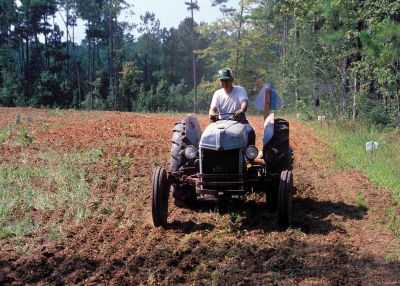Food Plots and Sandy Soil
It is common for land managers and hunters to supplement white-tailed deer diets. Most do so through protein feeding and food plots. It has been shown that supplemental forage will increase body condition, fawn recruitment, and antler growth in deer. However, one problem that managers encounter is finding the proper food plot seed or plant species for their soil types.
There are many species that can be planted into plots. However, identifying the proper deer food plots for sandy soil is one of the more common problems that persons interested in deer management encounter. There are options, and I’ll explain some of the considerations necessary.
Sandy Soils Lower in Productivity
Managers know that the most fertile and productive soils produce the highest yielding deer food plots. However, these soils usually support the best native habitat, too. When possible, food plots should be established on sites where the native habitat has previously been degraded, yet the soil is good.
However, sometimes the only soil available on a property is sandy soil. There is nothing necessarily wrong with sandy soil b. It does provide some advantages when it comes to food plots for deer. However, deer food plots on sandy soils will face certain issues.
Food Plots and Soil Types
Many properties where deer management takes place are not conducive to producing cultivated ag crops. As a result, most deer food plots face soil issues of some sort. Soils often are too saline, rocky or sandy for normal cultivation. As a result, they end up becoming forested or wooded and holding white-tailed deer.
Almost every property has more than one soil type. To identify the best soils on a property for planting seed, make sure to check out the USDA’s web soil survey for published soil surveys. This free application provides information on the suitability of particular soils for developing deer food plots and the value of the soils for wildlife habitat.
Sizing Up Soils for Deer Food Plots
Converting good quality native habitat into food plots is not a wise management decision. The overall abundance and general condition of wildlife is related directly to soil fertility. Of course, soil fertility will usually vary widely within a given area, even on a single property. Soils with higher fertility are typically better suited to spring food plots (warm season). The reason is these areas are fertile and generally hold moisture better during the summer months.
The deer food plots that work best on sandy soils are cool season, winter food plots. This is because the water holding capacity of sandy soils is much lower than that of soils with a heavy clay content. In addition, sandy soils and loamy soils will lack nutrients. Make sure to fertilize any food plot planted on sandy soil. Proper fertilization will dramatically increase the amount of forage produce and is critical for whitetail deer use. Perform a soil test. They are cheap and will save you time and money.
Amending Sandy Soils for Plots
It may take more than fertilizer. Liming, if recommended, will bring the pH up and dramatically increase the efficiency of fertilizer and forage production. To be effective at the time of seed germination, lime generally requires application 3 months before deer food plot seed planting.
In addition, legume seeds must be treated with the proper inoculant at the time of planting. Legumes will also produce their own nitrogen. The right deer food plot for sandy soil is the one that will grow. This means most plots found on sandy soils are limited to cool season plots. Find out more about species recommended winter food plot species.

WGH,
Thanks for sharing your experience with spring and winter food plots for deer. Wheat is a good one for fall/winter without a doubt. Lablab is a robust plant to use for spring.
It’s easy to plant food plots on sandy soil but clay is much better for growing them. Bigger bucks also come off of clay soil, but you have to work with what you’ve got.
Greg,
Yep, you are 100% correct. The water holding capacity of clay soils is hard to beat. Clays soils support more productive plant growth on average, so areas with clay soils generally produce heavy, bigger deer year-in and year-out.